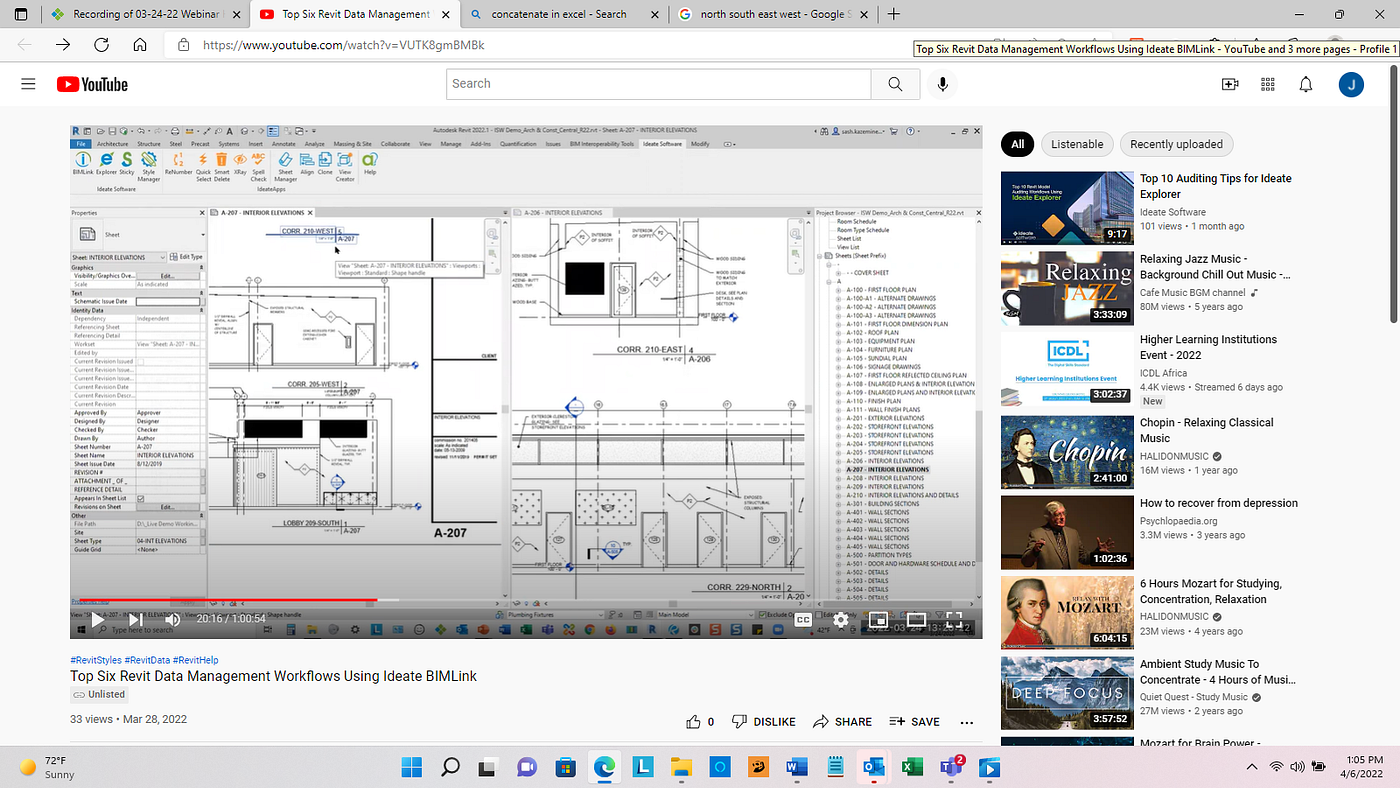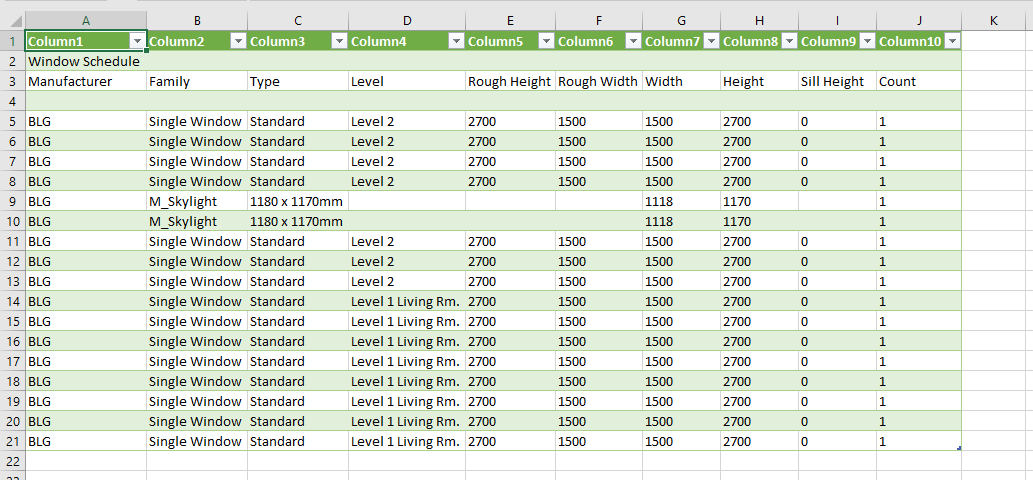Make Best Use Of Efficiency with Top-Rated Revit Plugins
Wiki Article
Excel-to-Revit: A Game-Changing Process for Architectural Style - Introducing the Secrets
Introducing excel-to-revit, the game-changing process that will revolutionize your design process. With excel-to-revit integration, you can streamline your architectural design, unlock efficiency, and make the most of partnership within your team. Get prepared to take your architectural design to the next degree with excel-to-revit!The Power of Excel-to-Revit Assimilation

Picture the convenience of being able to edit and upgrade job data in Excel, and instantly see those modifications reflected in your Revit model. Say goodbye to hands-on data access or tiresome updates. With Excel-to-Revit assimilation, you can conserve time and minimize errors by leveraging the power of Excel's functions and solutions to automatically create precise data in Revit.
Not just does this integration boost efficiency, yet it likewise boosts partnership amongst team participants. You can quickly share Excel documents with associates, that can then import the information into their Revit versions. This advertises a seamless exchange of details and guarantees that every person is working with one of the most up-to-date information.

Simplifying Architectural Layout With Excel-To-Revit
Enhancing architectural style is made simpler with the usage of Excel-to-Revit (revit tools). With this effective combination, you can maximize your process and conserve useful time throughout the design procedure. By leveraging the capacities of Excel and Revit, you can effortlessly move data in between the two platforms, removing the need for hands-on information access and decreasing the threat of errorsExcel-to-Revit enables you to import and export information easily, enabling you to quickly upgrade and modify your architectural styles. You can create timetables, calculate quantities, and produce records in Excel, and after that transfer that information straight into your Revit design. This assimilation makes certain that your design information is constantly current and synchronized, eliminating the need for manual updates and reducing the chances of disparities.
By utilizing Excel-to-Revit, you can likewise capitalize on the powerful computational abilities of Excel. You can carry out complex calculations, analyze data, and automate repeated jobs, all within Excel. With simply a couple of clicks, you can import the outcomes back right into Revit, allowing you to make informed layout decisions and optimize your architectural layouts.
Opening Performance: Discovering the Excel-to-Revit Operations
Optimize your performance by flawlessly incorporating Excel and Revit for an extra reliable operations. With the Excel-to-Revit operations, you can open a whole new level of effectiveness in your architectural design procedure. By making use of the power of Excel's information administration capacities and incorporating it with the adaptability and accuracy of Revit, you can improve your design process and conserve useful time.One of the key benefits of this assimilation is the capability to import and export information in between Excel and Revit. This suggests that you can quickly transfer project details, such as space routines or material amounts, from one software program to the various other, getting rid of the requirement for manual information entrance and minimizing the possibilities of errors. You can additionally produce customized formulas and estimations in Excel to automate repeated jobs and do complicated calculations, which can after that be perfectly incorporated into your Revit models.
Moreover, the Excel-to-Revit workflow enables better control and partnership in between group members. With Excel functioning as a central information center, several group members can deal with various elements of the task at the same time, upgrading and sharing info in real-time. This not only enhances interaction but likewise ensures that everybody is collaborating with the most updated information, removing the risk of incongruities.
Making The Most Of Cooperation: Excel-to-Revit for Architectural Teams
By effortlessly integrating Excel and Revit, architectural teams can greatly improve cooperation and accomplish more reliable design end results. When using this powerful operations, you can quickly transfer information between Excel spread sheets and Revit versions, improving more info here the style process and improving interaction among team participants.In addition, by leveraging Excel's effective computation capacities, you can execute complicated computations and analysis on your layout data, driving and offering valuable understandings notified decision-making. This integration additionally enables you to export data from Revit to Excel, allowing you to create comprehensive records, charts, and charts for presentations and evaluation. This collective workflow advertises efficient communication and control among employee, as Excel acts as a main hub for information management and sharing.
Total, by embracing the Excel-to-Revit operations, architectural groups can accomplish higher degrees of collaboration, effectiveness, and precision in their style process. import excel into revit. This assimilation empowers groups to collaborate flawlessly, making certain that everybody gets on the same page and adding to the success of the project
Revealing the Keys of Excel-to-Revit Integration

Among the keys of Excel-to-Revit integration is the capability to utilize the power of formulas this content and computations in Excel to drive criteria and generate complicated geometries in Revit. You can connect Excel spread sheets to Revit families, enabling you to input information directly into the spreadsheet and have it immediately upgrade in the Revit model. This enhances the layout procedure and guarantees accuracy and consistency throughout the project.
One more trick is the capacity to develop customized routines and records in Excel, making use of data drawn out from Revit. This enables you to assess and envision job info in a means that is not feasible within Revit alone. You can conveniently generate quantity take-offs, cost quotes, and task timelines, giving valuable insights for decision-making and project management.
In addition, Excel-to-Revit integration enables effective cooperation amongst staff member. Several individuals can function on the exact same Excel spreadsheet concurrently, making it easier to coordinate and track changes. You can likewise utilize Excel's commenting function to offer comments or connect style revisions.
Final Thought
So there you have it, the secrets of excel-to-revit integration have been introduced. This game-changing operations has the power to streamline architectural design, unlock effectiveness, and make best use of cooperation for building groups. By incorporating the power of Excel and Revit, designers can now work much more efficiently, save time, and produce much better layouts. So why wait? Begin including excel-to-revit assimilation into your architectural style process today and reinvent the means you function.With simply a few clicks, you can import the results back into Revit, allowing you to make visit this website educated style decisions and enhance your architectural styles.
By using the power of Excel's information administration abilities and integrating it with the adaptability and accuracy of Revit, you can streamline your layout procedure and conserve beneficial time.
By perfectly integrating Excel and Revit, building groups can greatly boost cooperation and accomplish a lot more effective layout results. When using this effective process, you can easily transfer data in between Excel spread sheets and Revit designs, improving the design process and boosting interaction among group participants.Moreover, by leveraging Excel's powerful estimation abilities, you can carry out complex estimations and evaluation on your design information, providing beneficial insights and driving notified decision-making.
Report this wiki page